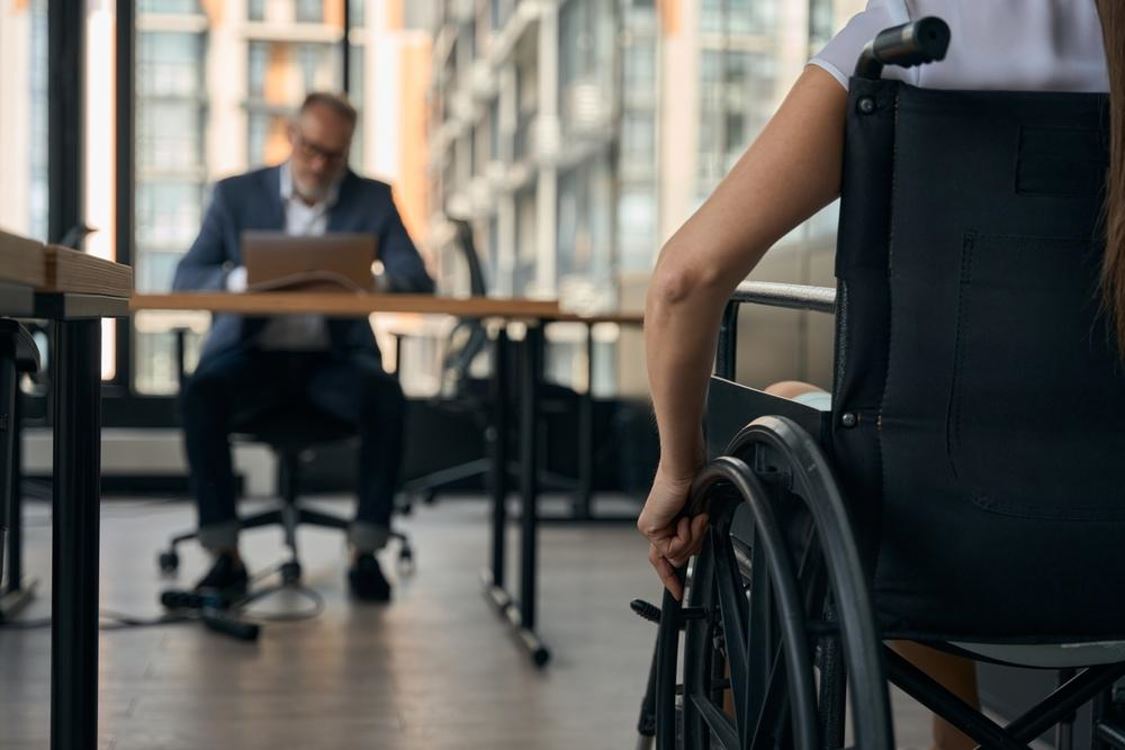How To Know It's Time To Return To Work After A Disability

For many Americans, a stable career provides a regular routine and a sense of purpose. That can be important after taking time away due to a disability. At Allsup Employment Services (AES), we understand the importance of returning to work. We help Social Security disability beneficiaries get back to the workforce after a serious illness or injury.
If you've received Social Security Disability Insurance (SSDI) benefits, the Ticket To Work Program with the Social Security Administration can help you transition back into the workplace. But how will you know when you’re ready? Here are some steps to take before returning to your career.
Talk To Your Medical Professional
Your most immediate priority should always be your health. Before you go back to work, talk to a trusted medical professional. Ideally, consult the doctor who has treated and guided you through the recovery process. At the very least, seek out a doctor who understands your present condition and the physical, mental, or emotional challenges it presents.
In some cases, returning to work can be therapeutic. For instance, resuming your career or pursuing a new one can provide stability and structure as you continue to heal from an injury or adjust to your present ability level.
Learn About Your Company’s Disability Policies
Under the Americans with Disabilities Act (ADA), companies must provide reasonable accommodations to workers with disabilities. When inquiring with your employer, you may find that your company can offer additional support to ease the transition back to the office.
Start by talking to your company’s HR department. Your employer may be able to provide flexible hours or remote work options to allow you to ease back in slowly. They also may have specific policies in place to address short- or long-term disabilities.
Make Sure You’re Ready
Returning to work after a disability doesn’t necessarily mean returning to the same employer. You may or may not feel ready to go back to your previous position.
If your previous job is not suitable for you, it may be time to update your resume and explore alternative employment options. The rehabilitation process might also provide an opportunity to acquire additional education or technical certifications that can enhance your employability or help you transition into a different career path. For instance, one AES client who underwent a heart transplant earned a certificate in graphic design while recovering.
Communicate With Your Recent Employer
The gap in time between when you left your last position and when you are contemplating returning can be very long (often a number of years), resulting in no long staying in touch with your former employer. However, if you left your previous position relatively recently, staying in touch can be helpful.
If your goal is to return to that same recent employer, make it clear that you intend to come back to work once you’re ready. A return-to-work letter can help you communicate your intentions.
This communication serves two purposes. First, it can inform your employer of your intentions, making it more likely they will hold your job until you return. Second, it can help your employer start thinking about how they might help support your return to work.
Consider A Gradual Return To The Workplace
While you might be tempted to dive right back into your job at the usual schedule, responsibilities and location – consider the possibility of a gradual transition back to your workplace instead. For instance, you could work part-time for a while or take flexible (or remote) hours to accommodate your needs.
Not only will this prevent you from burning out too quickly, but it may help reduce the risk of worsening your medical condition or jeopardizing your health.
Get Help From An Employment Network Like AES
As part of the Ticket To Work (TTW) Program, you’ll connect with an Employment Network (EN) like Allsup Employment Services. AES provides dedicated vocational experts who can help you make the return to work on your own terms. They will ensure that you balance your career goals with your physical, mental and emotional health.
Each TTW participant will work with a vocational expert who can help them make an informed decision about their career. At AES, this is what we do every day. Our experts help job seekers determine with certainty that it’s time to return to work and assist in landing their dream job.
Returning To Work With Allsup Employment Services
Are you currently receiving SSDI and would like to return to work?
Allsup Employment Services (AES) is an SSA-authorized EN for the Ticket To Work Program. We have over 10 years of experience helping thousands return to work successfully.
The Ticket To Work Program helps you protect your SSA disability benefits by:
- Maintaining your SSDI income while you attempt working again.
- Safeguarding your Medicare coverage.
- Pausing SSA medical disability reviews.
Benefits Of Working With AES:
- Earn More. Make as much income as you choose during the Trial Work Period and protect your full SSDI benefits.
- Stress Less. Avoid medical disability reviews and the worry that comes with them.
- Keep Medicare. While working, you can keep Medicare for over seven years.
- Avoid Risk. If you stop working anytime within five years, your SSDI benefits can resume through a reinstatement process.
- Pay Nothing. As a Social Security-authorized Employment Network, our services are provided at no cost.
Choosing AES means working with an EN who’s focused on your goals and will work with you every step of the way.
Get started with no cost and no obligation.
You can reach Allsup Employment Services today by calling 866-540-5105 or requesting a call.
Related Articles

Return to Work
6 Steps To Assessing Your Readiness To Return To Work

Return to Work
How To Avoid High Turnover Costs By Bringing Former Employees Back To Work – As Featured By Forbes

Return to Work
How To Safely Bring Individuals With Disabilities Back To Work During The Pandemic – As Featured By Forbes

Return to Work
Managing Personal Expectations When Returning To Work – As Featured By Forbes
Subscribe To Be Notified When A New SSDI + Work Blog Is Posted
Provide your email address here
